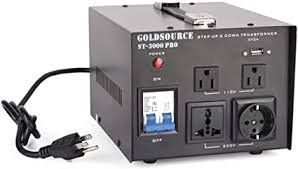Electrical and Power Tools
How to Use a converter from 240v to 120v More Safely
How to Use a Voltage Converter from 240v to 120v More Safely
When we use foreign electrical appliances at home, we will encounter one problem: the domestic voltage is 220V, but some of the electric appliances require 100-120V voltage, so we should use a 220V (230V, 240V) to 110V (120V) step-down voltage converter. Because most people use 220V to 110V step-down voltage converters in their homes, they will be more concerned about security. As we all know, the safe voltage for the human body is less than 36V, but the voltage converter output voltage is 110V. Then, is the home voltage converter secure? How about the voltage converter’s safety performance? To help people use voltage converters more safely, we’ll go over what to look for when choosing and using a 220V to 110V step-down voltage converter.
When Choosing a Voltage Converter from 240v to 120v keep the following points in mind:
- Choose voltage converters with an entire copper wire coil. When the electrical appliances are running at full power, the voltage converter can maintain high efficiency and low rising temperature.
- Choose voltage converters with overload protection. When the actual load exceeds the rated load, the voltage converter will automatically cut off the power supply to avoid a potential hazard.
- Choose voltage converters with ground protection. The purpose of ground protection is to connect the product’s metal shell and the power grid. It can effectively prevent personal electric shock accidents. The internal power transformer of a 220V to 110V step-down voltage converter is toroidal, its raw materials are insulating, and it has a built-in protection device, making the voltage converter safer in use.
- Choose voltage converters with greater power than electric appliances. Set aside as much space as possible ahead of time to avoid accidents caused by overload and to extend the service life of the voltage converter.
Furthermore, when using a 220V to 110V step-down voltage converter, you must pay special attention to:
- Before using, ensure that the power of the electric appliances is within the voltage converter’s conversion power range.
- To avoid overheating and causing a fire, do not intertwine the power line.
- Use a 220V to 110V step-down voltage converter only in places where water or liquid may be splashed.
- When your hands are wet, never use a 220V to 110V step-down voltage converter.
- Keep a 220V to 110V step-down voltage converter out of reach of children.
- When you find water or foreign matter in the socket, do not use a 220V to 110V step-down voltage converter.
- Do not disassemble or remodel the device yourself, and connect the earth wire to avoid electric shock.
- To avoid damaging the device, do not let a 220V to 110V step-down voltage converter work in overpower or overload based on the power of your electric appliances.
- When using it to dissipate heat, do not cover it.
- Please turn off the voltage converter’s power switch when not in use.
Also Check:
Features and Applications of Step-Up and Step-Down Voltage Converters


